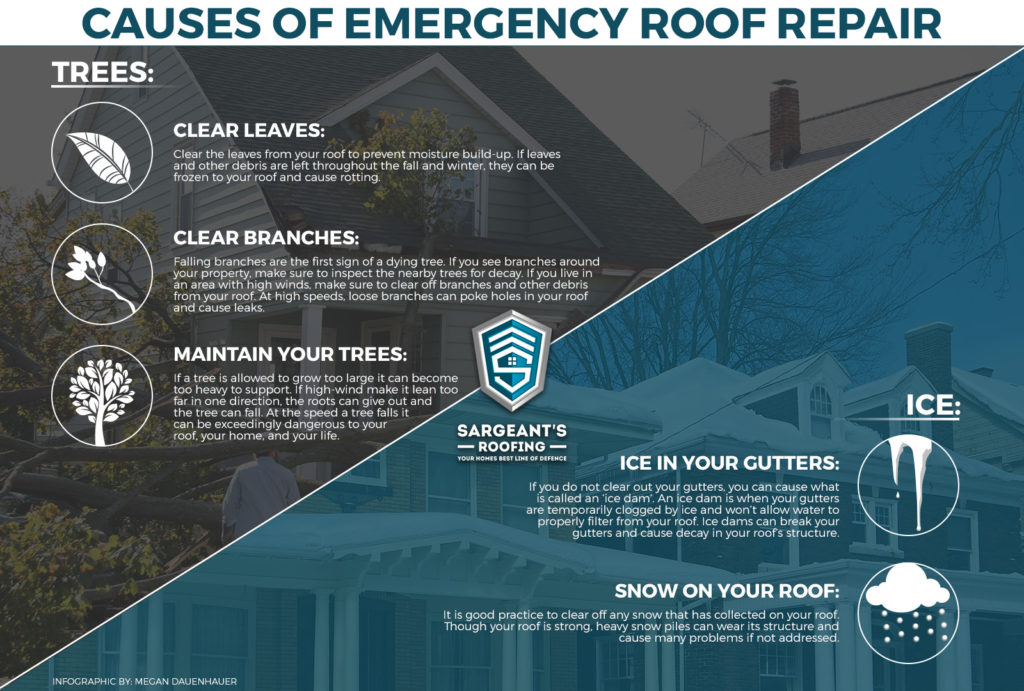Just How Does Climate Contribute In The Strength Of Your Roofing? Find Out Crucial Pointers To Ensure Its Defense From The Components Before It's Far Too Late
Just How Does Climate Contribute In The Strength Of Your Roofing? Find Out Crucial Pointers To Ensure Its Defense From The Components Before It's Far Too Late
Blog Article
Material Create By-Spencer Stilling
When it comes to your roof, the climate plays a critical function in its general health and wellness and lifespan. You may not realize exactly how rain can cause leaks or just how heavy snow can worry the framework. Also the sun's ruthless rays can weaken your roof materials gradually. It is very important to comprehend these effects, but what can you do to protect your roofing system from the elements? Discovering upkeep techniques and product selections could be key to guaranteeing your roofing stands strong versus whatever Nature throws its method.
Impacts of Moisten Roof covering
Rainfall can be a quiet opponent to your roof covering, triggering both prompt and long-lasting damage. When water permeates into splits or gaps, it can lead to leakages, which might disappoint up right away. You may see a discolor on your ceiling, yet already, the moisture could have already compromised your roof framework.
In time, constant direct exposure to rainfall can weaken roof materials. Tiles might warp, crinkle, or even break down, leaving your home prone to more water invasion. Mold and mildew and mildew prosper in moist conditions, which can jeopardize your interior air top quality and bring about health and wellness issues.
Standing water on your roof can likewise trigger significant issues. It includes unnecessary weight, boosting the threat of architectural failing. And also, it can accelerate the wear and tear of your roof covering products, making substitutes much more regular and pricey.
To safeguard your roof covering, ensure your gutters are tidy and working appropriately to draw away rainwater away. Routine inspections can help you capture potential issues before they rise.
Taking these actions currently can save you money and time in the future, keeping your home risk-free and completely dry.
Influence of Snow and Ice
When winter season shows up, snow and ice can present considerable risks to your roof, similar to rainfall. Collected snow can be rather hefty, and if it does not slide off, it can produce a dangerous lots that your roof mightn't be able to sustain. This stress can result in sagging, leakages, or perhaps structural failure.
Ice can likewise cause problems, particularly with ice dams. When snow on your roofing melts, it can flow down and refreeze at the eaves, producing a dam that avoids correct drainage. Water then backs up under shingles, resulting in leakages and water damages inside your home.
To safeguard https://www.prnewswire.com/news-releases/restoration-builders-inc-expands-into-the-florida-and-ohio-markets-with-acquisition-of-next-generation-roofing-contractors-llc-300932936.html , it's essential to maintain gutters free from particles, enabling correct drainage. https://roofingoptions28405.blog5star.com/32767142/understand-how-unanticipated-weather-adjustments-can-impact-your-roof-installment-routine-and-learn-key-approaches-to-maintain-your-task-s-momentum-in-spite-of-the-obstacles-presented-by-the-elements examining your roofing for indicators of wear and damages can aid capture concerns early.
If you see a considerable amount of snow, consider hiring a professional to remove it securely. Remember, it's better to be positive regarding snow and ice than to manage expensive fixings later on. Taking these actions can help ensure your roof covering holds up against the winter season without major concerns.
Sunshine and Temperature Obstacles
While you may delight in sunny days, extended direct exposure to sunshine and extreme temperature levels can be damaging to your roof covering. flooring contractors near me can break down roof covering materials gradually, causing bending, cracking, or fading. If your roof covering's roof shingles are made from asphalt, they may end up being brittle under intense heat, making them much more vulnerable to damages.
Additionally, heats can boost the danger of thermal expansion. As products increase during the warm of the day and contract at night, this constant cycle can produce stress and anxiety on your roof, possibly creating leakages or various other architectural concerns.
You might also notice increased energy costs as your cooling system works harder to combat warm build-up in your attic.
It's vital to choose roofing products that can withstand your regional climate's temperature variations. Light or reflective roof covering can help reduce warmth absorption, while correct ventilation in your attic can maintain a well balanced temperature level.
Regular assessments and maintenance can also catch problems early, guaranteeing your roofing stays in optimal problem. By remaining proactive, you'll safeguard your financial investment and expand your roofing's lifespan despite the difficulties positioned by sunlight and temperature level extremes.
Final thought
In conclusion, understanding how climate affects your roofing system is essential for keeping its stability and long life. Rainfall can lead to leakages, snow and ice can produce heavy loads, and extended sun direct exposure can cause materials to break down. By staying proactive with routine upkeep and picking the best materials, you can secure your roof from the aspects. Remember, a properly maintained roofing system not only enhances your home's value yet also keeps you safe and comfortable for many years ahead.
